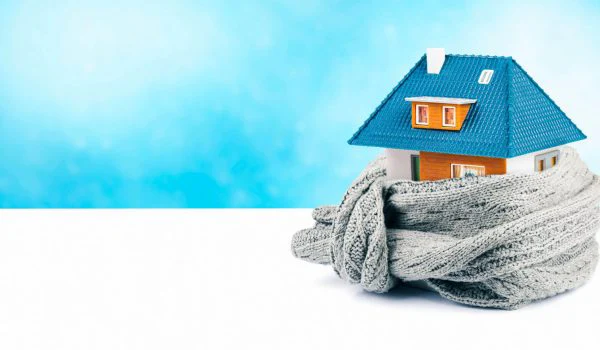Los Angeles homeowners hear two complaints every summer and winter: high energy bills and rooms that never feel quite right. Insulation solves both, and local utilities will pay a chunk of the cost if the project meets their standards. The Los Angeles insulation rebate lowers upfront expense, speeds up payback, and raises comfort on day one. This guide explains how the rebate works, what qualifies, and how a licensed insulation contractor in Los Angeles like Pure Eco Inc can set it up without friction.

What the insulation rebate covers in Los Angeles
Most rebates in the Los Angeles area come through utility programs such as SoCalGas and LADWP, sometimes paired with federal tax credits and local incentives. Programs change over time, but the structure is consistent: install qualifying insulation, reach a target R-value, use approved materials, and verify through a final inspection or documentation. Homeowners typically receive a cash rebate by check or bill credit several weeks after approval.
In practical terms, rebates often apply to attic insulation, with occasional incentives for wall, crawl space, and duct insulation. Attics deliver the best bang for the buck in LA’s climate zone because heat rises in winter and attic temperatures soar in summer. Many single-family homes built before the mid-1980s have little or no attic insulation, which makes them ideal candidates.
Typical rebate amounts and payback
Rebate amounts vary by program year. In recent cycles, attic insulation rebates have commonly ranged from about $0.20 to $1.00 per square foot, depending on the starting and final R-values, material type, and whether air sealing is included. For a 1,200-square-foot attic, that can mean roughly $240 to $1,200 back. Coupled with utility bill savings that often land between 10% and 20% for poorly insulated homes, the simple payback can fall within two to five years. Homes with energy-hungry AC systems in the Valley or the San Gabriel foothills often see faster returns because the cooling load is high.
Exact numbers depend on the home’s current insulation level, HVAC efficiency, attic ventilation, and air leakage. An on-site assessment by a qualified insulation contractor in Los Angeles will provide a better forecast.
R-values that meet Los Angeles requirements
Los Angeles sits in California Climate Zone 9 to 10 for most neighborhoods. For attics, R-38 is the standard target for rebates, with R-30 sometimes accepted in tight spaces. Wall insulation often targets R-13 to R-15 for 2x4 walls and R-19 to R-21 for 2x6 walls when feasible. Crawl spaces vary: many rebate programs focus on attic upgrades first, because they deliver the largest savings.
Material choice—fiberglass blown-in, cellulose, or spray foam—matters less than achieving the specified R-value and meeting program rules for installation and coverage. Programs also look for proper baffles at eaves to keep ventilation paths open and for clearances around recessed lights and flues as required by code.
Eligibility basics that trip up homeowners
Rebates come with rules, and small misses can void the incentive. Based on field experience, these are the most common stumbling points:
- Pre- and post-verification photos: Utilities want proof of the starting condition and the finished job. Photos should show ruler measurements of existing and final insulation depth, plus wide shots of coverage and baffles. Air sealing: Many programs require sealing major attic penetrations before adding insulation. Skipping this step can reduce performance and may disqualify the rebate. Contractor participation: Some programs require a participating contractor. Hiring a licensed insulation contractor in Los Angeles who is registered with the specific utility program avoids rework and rejected applications. Minimum square footage or percentage: Rebates may require insulating a minimum area, often most of the attic. Partial coverage can fail to qualify. Permits and code: Certain jurisdictions and project scopes need a permit. If required, it must be pulled and closed for the rebate to be approved.
The role of air sealing and ventilation
Insulation slows heat transfer. Air sealing stops hot or cold air from bypassing insulation through gaps around can lights, plumbing penetrations, and attic hatches. Combining both is crucial in LA homes because air leakage is common in older construction. Rebate programs reward this best practice, which is why a professional assessment includes smoke-stick testing or infrared scanning to locate leakage points.
Attic ventilation matters too. Without baffles and clear soffit vents, moisture can build up and reduce insulation performance. An experienced crew will install rafter baffles, protect the eave vents, and maintain clearances around heat sources to meet code and manufacturer specs.
How to qualify: a clean, step-by-step path
Here is a simple process that works across most Los Angeles rebate programs and prevents delays.
- Schedule a home assessment. A technician measures insulation depth, checks airflow and duct leakage, and identifies code and safety issues. This visit sets the baseline. Verify program details. Utility rules and amounts change. The contractor confirms current rebates, forms, and whether pre-approval is required. Scope the work. The plan should define target R-value, air sealing areas, material type, ventilation fixes, and permit needs. You receive a written quote that references the rebate. Complete installation with documentation. The crew photographs before, during, and after, and records insulation depths and square footage. They label the attic hatch with the final R-value. Submit the rebate package. The contractor or homeowner submits forms, invoice, photos, and permits as required. Approval usually follows within several weeks.
Materials that pass inspections in LA homes
Blown-in fiberglass and cellulose dominate attic upgrades because they cover irregular spaces well and deliver solid R-values at predictable depths. Loose-fill fiberglass is clean and stable, while cellulose offers dense coverage and sound damping. Spray foam performs very well in specific applications, but many rebate programs focus on prescriptive R-values for attics rather than foam-based assemblies, and costs can be higher. For most LA attics with accessible framing, blown-in materials meet rebate specs and budget requirements with fewer surprises.

Health and safety details inspectors check
Inspectors and program verifiers look for proper clearances around gas flues and recessed lights, sealed and insulated attic hatches, and intact fire blocking at wall tops. They want to see bath fans vented outdoors, not into the attic. If knob-and-tube wiring is present in very old homes, insulation must not contact it; remediation may be required first. Addressing these points avoids failed inspections and improves indoor air quality.
Real-world example from a Los Feliz bungalow
A 1,300-square-foot 1930s bungalow in Los Feliz had about R-6 of dusty insulation. Summer bedrooms ran 6 to 8 degrees hotter than the living room. The crew air-sealed can lights, top plates, and the attic hatch, then blew in R-38 fiberglass, added baffles at all eaves, and weatherstripped the hatch. The homeowner received approximately $700 in utility rebates and reported a noticeable drop in AC runtime. Electric bills fell by roughly 15% over the next two billing cycles compared with the prior year, even with similar temperatures. Comfort improved right away.
How this works with federal incentives
Alongside local rebates, the federal Energy Efficient Home Improvement Credit (Section 25C) offers a credit equal to 30% of project cost up to an annual cap. Insulation and air sealing qualify. Homeowners cannot claim a credit on costs covered by rebates, so documentation should show the net paid amount. A tax professional can advise on limits and carryover. Stacking a utility rebate with the federal credit often covers a significant slice of the project.
What makes a bid trustworthy
A quality proposal specifies the final R-value, measured square footage, material type, air sealing line items, baffle count or locations, and any code repairs. It includes photos of current conditions and identifies obstacles such as tight eaves or low-clearance bays that might need dense-pack techniques. It clarifies whether the contractor is submitting the rebate on the homeowner’s behalf and states the expected amount based on current program rules. This clarity saves time and cuts change orders.
Common edge cases in LA homes
Cathedral ceilings complicate insulation because there is no open attic to access. Dense-pack methods or above-deck solutions during a re-roof may be required; rebates are less common here. Mixed HVAC systems with leaky attic ducts can erode savings; sealing or insulating ducts may be recommended along with attic work. If the attic doubles as a storage area with a plywood deck, sections may need to be lifted or built up with raised platforms to reach R-38 without compressing insulation. Each situation can still qualify when scoped correctly.
Why work with a local insulation contractor in Los Angeles
Local crews know r38 insulation Los Angeles which neighborhoods—Sherman Oaks, Highland Park, West Adams, and parts of Pasadena and Alhambra—tend to have under-insulated attics and quirky framing. They understand local permitting, wildfire-area vent requirements, and how LA’s heat waves stress older AC units. A local insulation contractor in Los Angeles coordinates the rebate paperwork, schedules any required verification, and installs to both code and program specs, which protects the incentive and the warranty.
Ready for lower bills and a cooler home?
Pure Eco Inc installs insulation across Los Angeles, Santa Monica, Glendale, Burbank, the San Fernando Valley, and the South Bay. The team handles the rebate end to end, from photos and forms to final verification. Homeowners see tighter homes, quieter rooms, and lower bills within days.
Call Pure Eco Inc to book an assessment, get a clear price with the expected rebate, and see what R-38 can do for your comfort this season.
Pure Eco Inc. provides professional attic insulation and energy-saving solutions in Los Angeles, CA. For over 20 years, our family-owned company has helped homeowners improve comfort, reduce utility bills, and make their homes more energy efficient. We specialize in insulation upgrades, spray foam installation, and attic cleanup for homes across Los Angeles County. At Pure Eco Inc., we believe in treating our customers like family and creating a greener, healthier living environment for every household we serve. Call today to schedule an attic insulation inspection or get a free estimate.
Pure Eco Inc.
422 S Western Ave #103
Los Angeles,
CA
90020,
USA
Phone: (213) 256-0365
Website: https://www.pureecoinc.com
Social Media: Facebook | X | Instagram | Yelp
Map: View on Google Maps